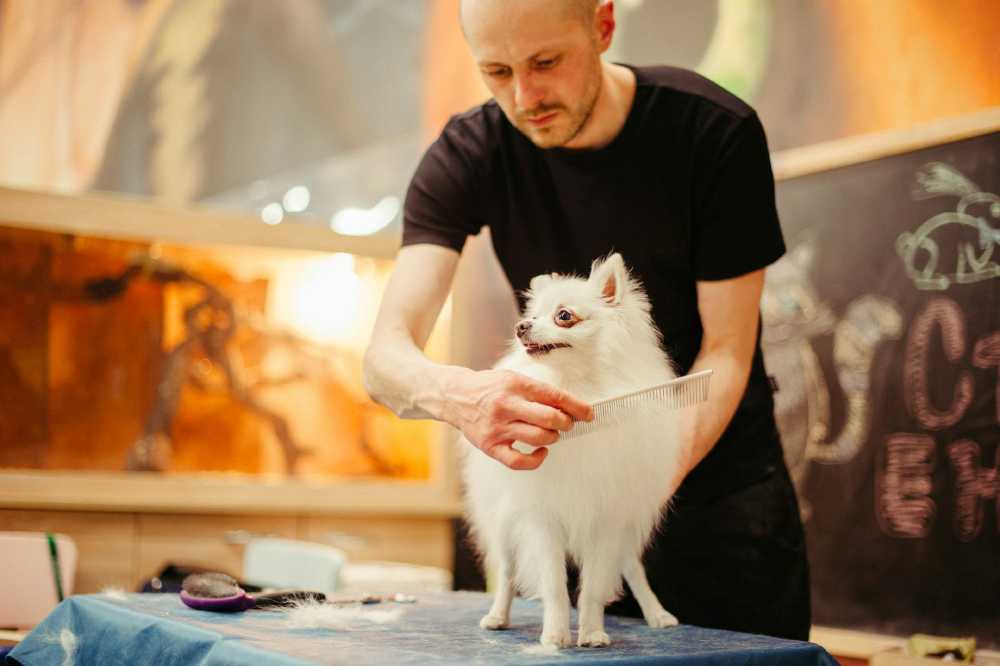The Essentials of Canine Hygiene: A Comprehensive Guide to Keeping Your Dog Clean and Healthy
Grooming is not merely a luxury but a vital element in your dog’s health regimen. Ensuring that your furry companion receives consistent grooming is about more than a beautiful coat; it promotes health and detects possible issues before they become problematic.
The first step is understanding that grooming is an essential part of pet care. It’s more than just a bath or a haircut; it is a comprehensive process that, when done faithfully, can prevent issues like painful matting and reduce the likelihood of skin infections. It can also serve as a time to check for fleas or ticks that can harm both the pet and the owner.
The Best Grooming Tools for Every Dog Breed
Choosing the proper grooming tools is crucial in caring for your pet, as different breeds require different equipment. Incorporating affordable dog grooming services in Seattle, into your pet’s routine promotes a proactive approach to their health.
Frequent grooming sessions allow you to closely inspect the state of your pet’s skin and coat in addition to strengthening your bond with them. Finding the best grooming equipment recommendations that fit your dog’s specific needs can make the process of grooming smoother and more efficient.
A rubber brush may be sufficient to remove loose hair and debris from dogs with short coats, such as Beagles or Bulldogs, but a bristle brush and detangler are required for long-haired breeds, such as Shih Tzus and Collies. The correct supplies not only ease the process but also ensure comfort and safety for your dog.
Establishing a Grooming Routine That Works
Settling into a grooming routine is crucial for maintaining canine hygiene without disrupting your pet’s life. The key is to adapt the frequency and type of grooming to match your dog’s hair type, skin sensitivity, and lifestyle. For example, dogs with active outdoor lives or long coats may require more frequent baths and brush-outs to keep them clean and comfortable.
Starting the grooming habit early in life will help your dog acclimate to the process, making it less stressful for them (and you) as they grow. Including activities like brushing, bathing, nail clipping, and ear cleaning in your schedule keeps your dog in top condition and can become moments you both look forward to with pleasure.
Navigating Skin and Coat Issues
Canine skin and coat issues can manifest in various ways, such as excessive shedding, bald spots, or recurrent itching. It is important to pay attention to these symptoms since they may point to underlying medical issues.
Regular grooming can aid in the early diagnosis and treatment of these disorders, frequently averting their progression into more significant health issues.
If you observe any abnormalities in your dog’s coat or skin, such as redness or an unusual odor, it’s advisable to consult your veterinarian promptly. They can diagnose the problem accurately and prescribe appropriate treatments, which might include medicated shampoos or dietary changes.
The Importance of Ear, Eye, and Dental Hygiene
Ears, eyes, and teeth require equal attention during the grooming process. Ear infections can be expected, particularly in dogs with floppy ears. Gently cleaning your dog’s ears with appropriate products can help prevent such diseases. Eyes should be checked regularly for signs of redness or discharge and cleaned with a soft, damp cloth.
In a similar vein, since dental problems can result in other health problems including heart disease, oral hygiene should not be disregarded.
Regular brushing of your dog’s teeth and providing dental chews and toys can help maintain healthy teeth and gums. Establishing these practices as part of your grooming routine will maintain your pet’s cleanliness and overall health.
Handling Sensitive Dogs During Grooming Sessions
Grooming can be particularly challenging for sensitive dogs or those with past negative experiences. Creating a calming environment for such dogs can help make the grooming process more enjoyable. Being patient, using a calm voice, and offering treats as a reward during and after the session can reinforce positive associations with grooming.
Understanding your pet’s temperament and gradually introducing them to tools and proceedings can minimize stress and anxiety.
The Role of Nutrition in Canine Coat Health
The state of a dog’s skin and coat is directly impacted by nutrition, which is a crucial part of canine health. A balanced diet with the right mix of proteins, fats, vitamins, and minerals can promote a lush, glossy coat and robust skin. Treats and supplements rich in omega-3 fatty acids, for example, have improved the quality of a dog’s fur.
Conversing with your veterinarian about your dog’s diet and any supplementary needs is crucial. They can provide tailored advice considering your dog’s breed, age, and health conditions. In many cases, a simple adjustment to a more nutritionally complete diet can lead to visible improvements in their coat and general health.
Beyond the Brush: The Holistic Approach to Dog Grooming
Ultimately, a holistic approach to canine grooming looks at the ‘whole dog’: their environment, diet, physical health, and emotional well-being. Exercise plays a vital role in this holistic view, as a physically active dog is generally a healthier dog, and regular movement can also help keep a dog’s coat in better condition by naturally distributing skin oils.
Similarly, the living environment should be kept clean to minimize the introduction of dirt and parasites into a dog’s coat.
A comprehensive approach to your pet’s well-being will result in a healthier, happier, and well-groomed dog. This journey to canine hygiene excellence might require effort. Still, it strengthens the bond with your furry companion and assures them a quality life, which is, without doubt, a rewarding endeavor.

